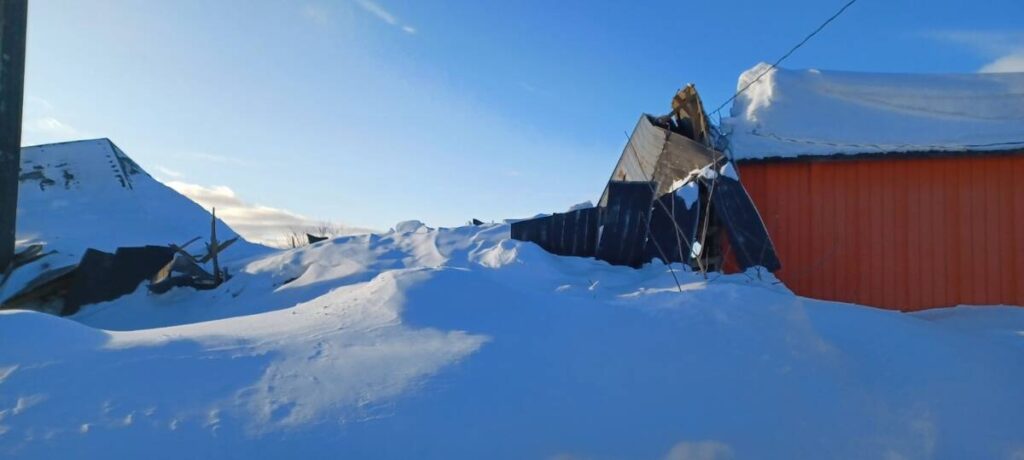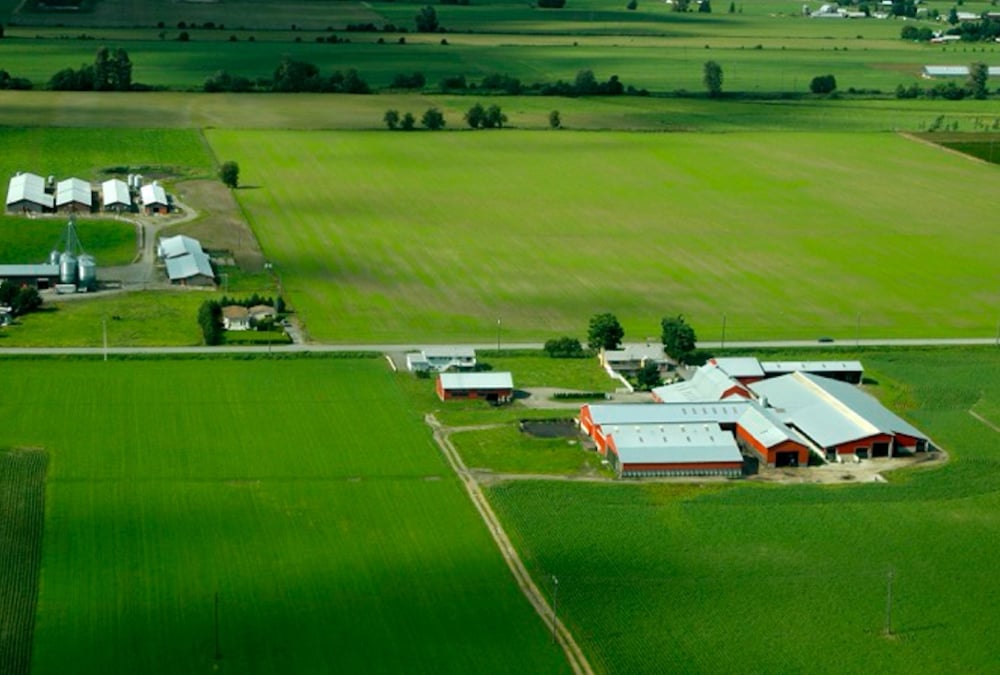Some roof collapses due to snow load not covered by insurance

Ontario’s farm community endured what seemed like an unprecedented number of structural collapses due to snow load this past winter.
The rash of collapses – and the varied experiences of the structures’ owners as they navigated insurance claims (or the lack thereof) – shone a potentially unwelcome light on the capacity of Ontario’s farm structures to withstand severe weather conditions.
Why it matters: Canada’s insurance sector has, in recent years, struggled to maintain financial viability in the face of rapidly rising weather-related claims payouts.
Read Also


Investing in high-speed rail corridors to save Canada’s farmland and solve its housing shortage
A long-time advocate for protecting Canada’s farmland thinks governments should use the sovereignty crisis to invest in high-speed rail corridors to keep prime acres in food production while simultaneously addressing the country’s housing shortage.
Concurrent to the collapses was the introduction of a long-awaited update to the National Farm Building Code (NFBC).
The code update is informed by modern climatic models that predict “ground snow cover” will decrease over the coming years in southern Ontario. But that’s different from “snow load” on roofs. The updated NFBC calls for a 10-40 per cent increase in snow load requirements for design and construction of farm buildings in the province.
“Climate change-fuelled losses continue to mount for Canadians,” offered the media relations department of Guelph-based Co-operators Insurance, when asked by Farmtario about the company’s snow load loss experience this past winter.
“The winter we experienced this year in Ontario certainly caused snow load losses for clients,” the Co-operators representative said, adding that “across the industry, insurers have seen claims payouts overall rising exponentially” due to climate-related losses.
Through the winter, more than 50 farm collapse claims were handled by Listowel-based Trillium Mutual Insurance Company where snow load was a likely contributing factor. The company’s Manager of Risk Management and Claims Services, David Colyn, told Farmtario the damaged structures included barns housing dairy, beef and poultry as well as riding stables, drivesheds, bank barns and fabric-covered buildings.
Most structures were older than 10 years, with “a large number from 20-40 years old” and some even older.
“The words we like to use in the insurance business are ‘frequency’ and ‘severity’,” Colyn explained, “and what we’re seeing in our space right now is a lot of both.”
“It was like an old-time Bruce County winter. We’re used to getting a few claims here and there for collapses but this was a whole lot different.”
On Feb. 16, a calf shed attached to the main post-and-beam barn collapsed at Morview Farms in Oro-Medonte. The next day, the roof of a standalone barn used for shelter during the pasturing season for the dairy farm’s heifers gave way. Both buildings are crucial to the farm’s continued operation, said Morview’s Jennifer Moreau, who adds the family is now struggling with decisions about how to rebuild.
“My brother-in-law was in the (main) barn when (the calf shed) went down,” said Moreau. “It must have been so frightening. I’m very thankful that he was fine and that we didn’t lose any animals.”
Photos provided by Moreau show the considerable depth of snow that had accumulated in the Orillia region by Family Day Weekend. By that time, farm organizations including the Ontario Federation of Agriculture (OFA) and Dairy Farmers of Ontario (DFO) had sent out messages advising members to monitor snow depth on their barn roofs and potentially remove it.
Morview heeded the warnings. Moreau’s brother-in-law heard cracking noises from a support beam upstairs in the main barn and they decided to do what they could to remove the snow from the barn’s high roof.
“We were all out there,” she recalled. “My son (who’s 18 years-old-old) called in his friends. My son and my nephew were up on the roof. Thankfully a neighbour came with an excavator and was able to scrape some of the snow away.”
“I was so scared we were losing our milking barn,” she said, emotion rising in her voice.
Colyn characterized the winter of 2024-25 the following way: an early event in December that “brought significant, heavy snow,” followed by a “return (of snow) around Christmas (that) remained until spring with no major melts.” There was “frequent snowfall, cold temperatures and ice build-up (that) created lasting accumulation” of snow and ice on rooftops.
Moreau is more concise. “It has been an incredible winter here,” she said, only days after the region endured yet another icily challenging weather event – the late March ice storm and power outage. “It has not been usual in any way.”
Both OFA and DFO advised calling in contractors who specialize in removing snow from roofs if the farmers couldn’t do so themselves safely. But Colyn admits the number of companies with such specialization is small. Some people may assume roofing companies would have the expertise, he said, but is that really true? They typically construct roofs while the sun shines, not clear snow away in the dead of winter.
Moreview tried contacting firms that offered the service but discovered lengthy waiting lists. With beams cracking and the forecast calling for more high winds and snowsqualls, they couldn’t wait.
Insurance companies would never tell property owners that the best choice is climbing on the roof yourself to clear the snow. But Colyn admits that “farmers are usually resourceful. And if they can adapt some machine with some sort of rake to reach up and clear off snow, they will.”
What insurance companies do tell property owners is to monitor all factors related to a building’s resilience against potential damage. With snow load, Colyn stressed, trusses and especially truss plates are key components.
A discussion paper published by the Canadian Board for Harmonized Construction Codes, which oversaw the consultation process leading to the recent update of the NFBC, added, “snow loads on roofs are also affected by the combination of internal temperature inside the building, external temperature, and degree of roof insulation.”
A big challenge for insurance company inspectors after receiving a collapse claim, Colyn explained, is singling out snow load within a complex assessment of possible factors including truss plate condition, age of building and type of construction. High winds can also potentially contribute. And if there have been “unauthorized modifications” – including the addition of extra openings through load-bearing elements or do-it-yourself merging of two rooflines – any coverage is probably voided.
“There’s no specific premium price for insuring a building against snow load,” Colyn explained. “Each policy differs depending on the overall risk of a collapse occurring from a combination of factors. It’s best to consult your broker or agent to review coverage.”
Moreview Farms was shocked to learn after their collapsed buildings were inspected, that they had no coverage for this particular loss. Not only that, but the farm’s insurer told them that, given the combination of factors specific to their barns, there’s no way they could have been insured against this type of loss.
“If rats had chewed my barn so much it fell down, I would be covered,” Moreau said. “But we aren’t for this … There’s no way we could have been insured for this.”
Asked why snow load loss isn’t a standard offer for Ontario farm properties, the Co-operators representative responded, “not all clients or farms have the same needs and requirements. Speaking with an advisor thoroughly to discuss your situation is an important step in ensuring you have the right coverage.”
Colyn encourages farmers to be aware of truss plate condition and the general condition of roofs. And he encourages farmers to take advantage of the inspection services offered by most farm insurers. These specialists will suggest changes or upgrades to lessen the theoretical risk of various types of losses, potentially decreasing your insurance cost at the same time.
Insurance rates and the new code
A big unknown, for now, is how the recent upgrades to the NFBC will affect insurance rates. Theoretically, barns built to the new code should be less susceptible to wind and snow so insurance rates could reflect that.
Bram Van den Heuvel, an engineer with Tavistock-based Stonecrest Engineering, told Farmtario that “the update on climatic data will improve truss designs as the snow loads used are better overall. From a structural perspective this can help roofs resist more snow load.”
But a presentation by Van den Heuvel and Guelph-based Tacoma Engineering’s Tyler Griffith at the recent annual conference of the Canadian Farm Builders Association indicated that the cost of materials and labour to meet enhanced requirements for wind and snow load (as well as fire protection and possibly seismic risk) will increase. That means the cost of insuring existing buildings to account for replacement under the updated code will likely increase.
“It seems that the (Farm Building) code is finally catching up” to contemporary climatic models, Colyn said. “And I also think it’s safe to say that the cost of construction will likely go up.”
Colyn adds that the insurance sector doesn’t have the luxury of waiting and seeing if the climate change models will be accurate in 10, 25 or 50 years. The sector must rely on the most trustworthy predictions available.
And those predictions point to increasing instability putting a strain on the resilience of all types of structures.
“What it really means is more of those irregular and erratic weather patterns,” the Trillium Mutual risk management specialist said, adding the early December blizzard that took down farm roofs in the Lucan area fits firmly into that “irregular” category.
Moreau is lobbying to have the winter of 2024-25 – certainly in the Oro-Medonte vicinity, but perhaps also in other parts of the province – declared a “disaster” so that farmers can apply for financial assistance to rebuild. She has contacted various levels of government and several politicians but has, so far, met with little response.
“We’re a small farm. We milk 35 cows. For us to replace a barn isn’t fiscally possible,” she said.
And although some of her farming neighbours have willingly jumped on board to help her contact MPs and MPPs, Moreau worries that government agencies charged with managing disaster relief won’t see a bunch of barn collapses over the course of a winter in the same way they might see a flash flood in a heavily populated urban area.
“I just don’t know if the larger public knows how devastating it is to lose a barn,” she commented.
Source: Farmtario.com


